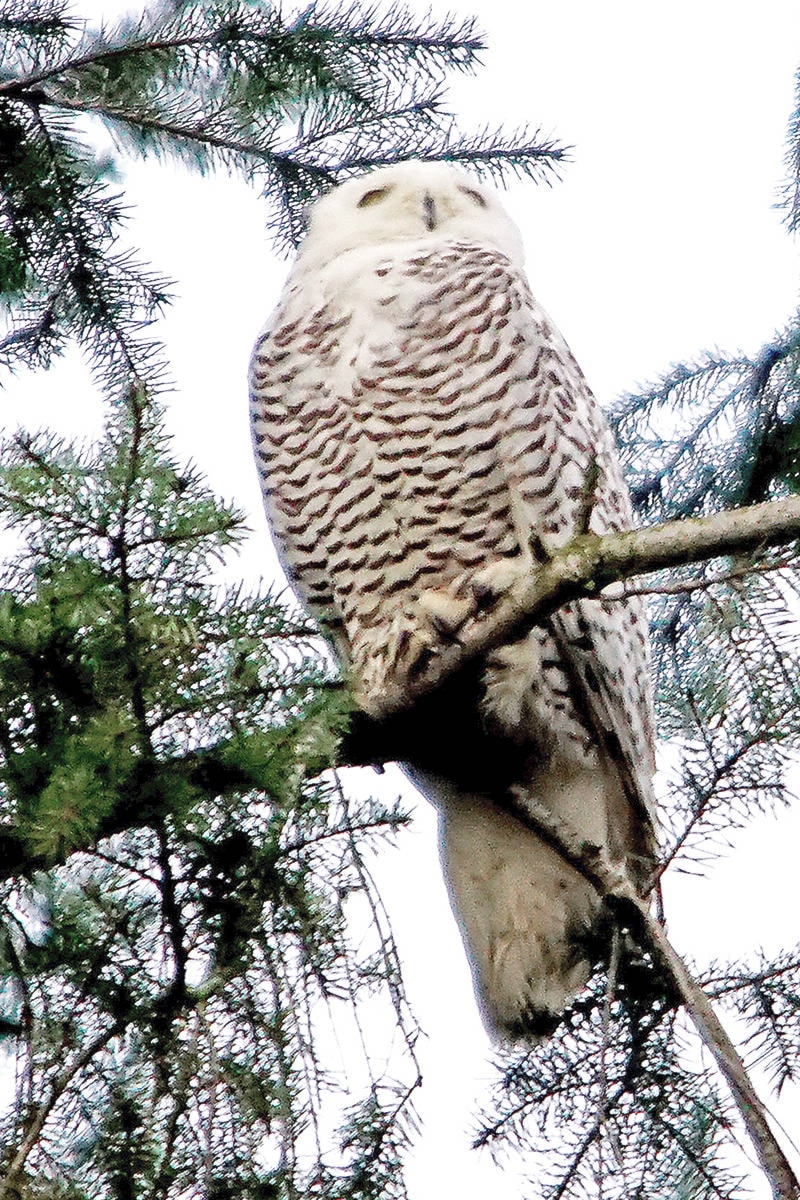It is one of only two or three snowy owls spotted in the Lower Mainland during all of 2017, and it was observed just before the year ended in Langley during the Dec. 30 annual Christmas Bird Count (CBC).
The owl would likely have been missed if it wasn’t for some crows that were “mobbing” the owl high up in a tree along 200 Street, said Langley Field Naturalists (LFN) member John Gordon.
The LFN are not saying exactly where the discovery was made because owls are “sensitive to disturbances” Gordon said.
Snowy owls usually make their homes north of 60° latitude in the Arctic tundra, in Alaska, the Yukon, Northwest Territories, Nunavut and Eurasia.
The regal-looking bird is the largest (by weight) North American owl. It spends summers far north of the Arctic Circle hunting lemmings, ptarmigan, and other prey.
But it is a nomadic bird, and population fluctuations in its prey species can force it to relocate.
The owls have been reported as far south as the American Gulf Coast states, Hawaii, southernmost Russia, and northern China.
The annual count was organized by the White Rock and Langley Naturalist Clubs, along with the LFN and other conservation groups in the region.
Langley area group leader Mike Klotz said the local count was a “tremendous success … the one with the most interesting finds for the day.”
The weather conditions were considerably better than they were during the 2016 count, when 21 people who braved the well-below-freezing temperatures to count more than 4,000 birds and 61 species.
READ MORE: Birders brave the cold for annual Christmas count
This year, the weather was better — bright and sunny — and the area being surveyed was unaffected by the ice storms that rattled the Fraser Valley.
The 25 people on the count this year, six of them first-timers, spotted a record 68 species.
Mallards were the most numerous bird with 1,144 individuals seen
Highlights, as reported by Klotz:
- There were almost as many bald eagles as rock pigeons
- There were as many Anna’s hummingbirds as red-tailed hawks.
- Birds “strikingly absent” were wood ducks, Wilson’s snipes and barred owls.
- The Brookswood area of Langley had the most species at 46.
- There was a decrease in the individual number of invasive species including starlings, house sparrows and Eurasian collared-doves.
“This is always good news as these are one of the largest reasons for native species decline,” Klotz said.
The counts are used to study the health of local winter bird populations.
White Rock and Surrey are divided into many sections. Data collected during the Langley/White Rock count includes details on the number of birds of each species seen or heard within a local 24-km diameter circle. Surveying this circle year-after-year contributes valuable long-term information on how winter birds are faring, both locally and across the country.
During last year’s count in Canada, over 3 million birds and 278 species were counted by 14,000 participants in 447 counts across the country.
READ MORE: Counting birds in Langley
dan.ferguson@langleytimes.com
Like us on Facebook and follow us on Twitter
